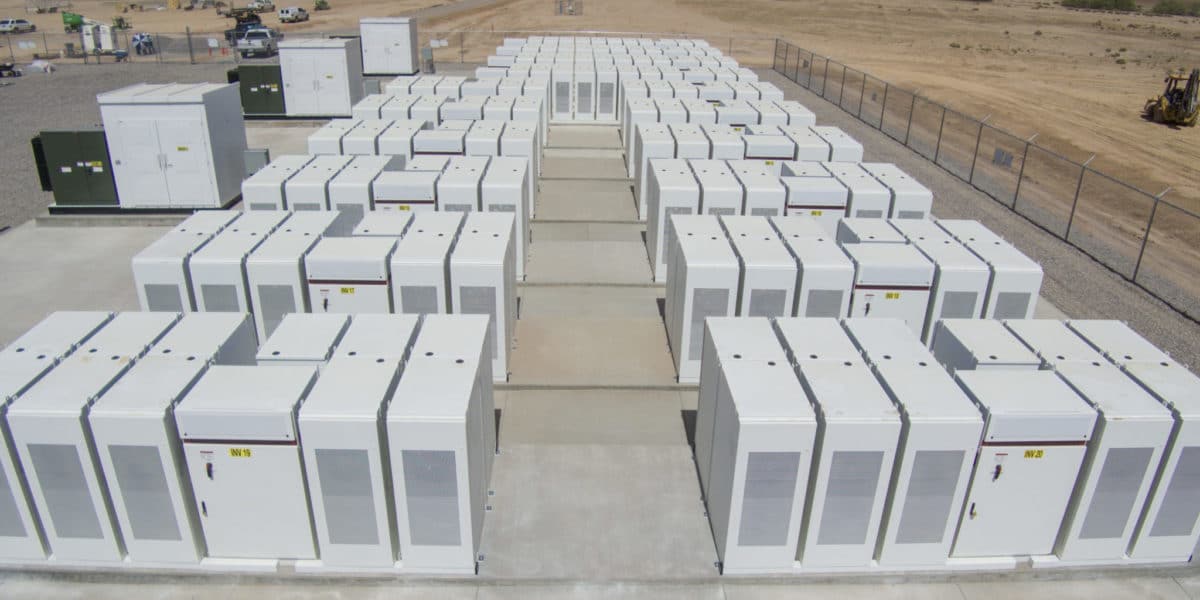With grid-tied energy storage expected to nearly double in 2019 versus 2018 levels (after it grew 80% in 2018), the future pipeline of more than 33 GW is looming bigger as cheap solar+storage contracts are signed, investment bankers salivate and music makers envision 24 hours of solar power.
And while we are focused on one particular bill, this legislation is but one of many being submitted around the nation, because many see the rising opportunity.
Yesterday, a group of U.S. senators headed by Susan Collins (R-ME) submitted the Better Energy Storage Technology (BEST) Act (pdf). The bills authorizes $300 million, over five years, to build up to five energy storage demonstration projects.
The Act says it seeks to to accelerate testing and validation of energy storage in U.S. national laboratories, and would require the Department of Energy to develop a strategic plan, in concert with with national laboratories, federal agencies, and end users, with cost targets for a goal of delivering cost-effective consumer-level energy storage.
While specific cost targets are left up to the Department of Energy to define, BEST does specify three technology requirement ranges:
- (A)(i) to balance day-scale needs, are capable of highly flexible power output for not less than 6 hours; and
- (ii) have a lifetime of—
- (I) not less than 8,000 cycles of discharge at full output; and
- (II) 20 years of operation;
- (ii) have a lifetime of—
- (B)(i) can provide power to the electric grid for durations of approximately 10 to 100 hours; and
- (ii) have a lifetime of—
- (I) not less than 1,500 cycles of discharge at full output; and
- (II) 20 years of operation; and
- (ii) have a lifetime of—
- (C) can store energy over several months and address seasonal scale variations in supply and demand.
Federal legislative efforts include the recently Promoting Grid Storage Act of 2019, which also seeks pilot projects and further research, and a bill to extend the 30% tax credit to standalone energy storage. This follows state-level policies such as $280 million in New York incentives that recently went live, and Massachusetts lawmakers approving energy storage as a part of solar+storage net metering programs, as well as privately-owned energy storage installations starting to receive payments from forward capacity markets.
In early 2018, the U.S. Department of Energy’s (DOE) Advanced Research Projects Agency-Energy (ARPA-E), put out a a request for projects to develop energy storage systems that provide power to the electric grid for durations of 10 to approximately 100 hours, or up to a month, which had very specific price goals already developed – and some very similar project duration goals.

And while there is often talk about seasonal storage, there is also much analysis that suggests over building solar is cheaper than seasonal storage, and that if we consider this overbuilding at the time of construction, we can monetize it.
There does seem to be a consensus building that getting the United States to ~80% wind+solar will take a respectable amount of energy storage (12 hours by some estimates), if we’re not going to build major north-south and east-west transmission power lines.
This content is protected by copyright and may not be reused. If you want to cooperate with us and would like to reuse some of our content, please contact: editors@pv-magazine.com.








By submitting this form you agree to pv magazine using your data for the purposes of publishing your comment.
Your personal data will only be disclosed or otherwise transmitted to third parties for the purposes of spam filtering or if this is necessary for technical maintenance of the website. Any other transfer to third parties will not take place unless this is justified on the basis of applicable data protection regulations or if pv magazine is legally obliged to do so.
You may revoke this consent at any time with effect for the future, in which case your personal data will be deleted immediately. Otherwise, your data will be deleted if pv magazine has processed your request or the purpose of data storage is fulfilled.
Further information on data privacy can be found in our Data Protection Policy.